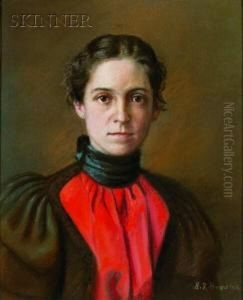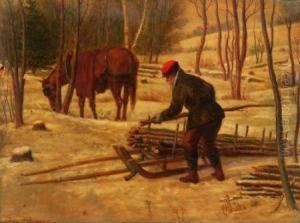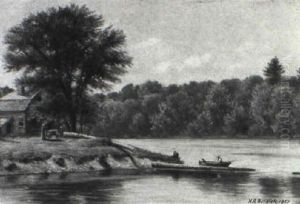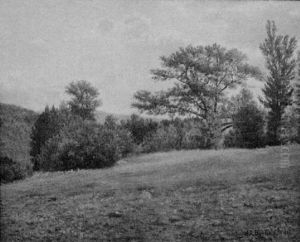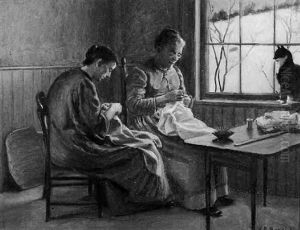Horace Robbins Burdick Paintings
Horace Robbins Burdick was an American artist, known for his diverse skills in painting, drawing, and etching. Born on August 15, 1844, in East Killingly, Connecticut, Burdick showed an early interest in art, which was nurtured throughout his life. His artistic journey began in earnest after moving to Providence, Rhode Island, where he was able to study and work among a burgeoning community of artists and intellectuals.
Burdick's career spanned over several decades, during which he developed a reputation for his detailed and sensitive portrayals of everyday life, landscapes, and historical scenes. His work was characterized by a remarkable ability to capture the essence of his subjects with a delicate touch and nuanced use of color. Despite being primarily known for his watercolors and oil paintings, Burdick was also proficient in etching, a skill that allowed him to explore different artistic expressions and techniques.
Throughout his life, Burdick was actively involved in the art community, contributing to the development and recognition of American art in the late 19th and early 20th centuries. He was a member of various art organizations and exhibited his work at numerous exhibitions, including those at the Boston Art Club, the Providence Art Club, and the National Academy of Design. His artworks were well-received by critics and the public alike, earning him accolades and recognition.
Burdick's legacy extends beyond his artworks; he was also a mentor and inspiration to younger artists, sharing his knowledge and passion for art with the next generation. Despite the passage of time, his work continues to be admired for its technical skill and emotional depth, embodying the spirit of an era that sought to capture the beauty and complexity of the world.
Horace Robbins Burdick passed away on February 23, 1942, leaving behind a rich body of work that continues to be studied and appreciated by art historians, collectors, and enthusiasts. His contributions to American art have ensured his place within the canon of notable artists from his period, and his art remains a testament to his talent and dedication to his craft.














